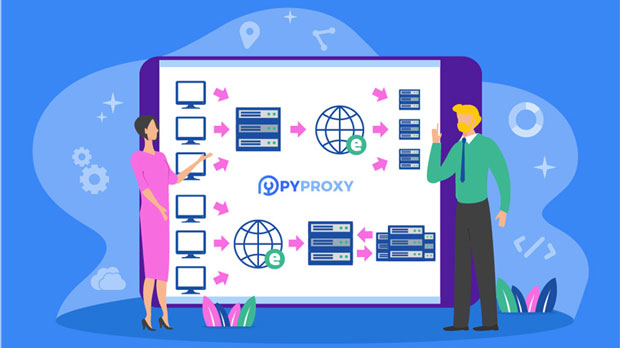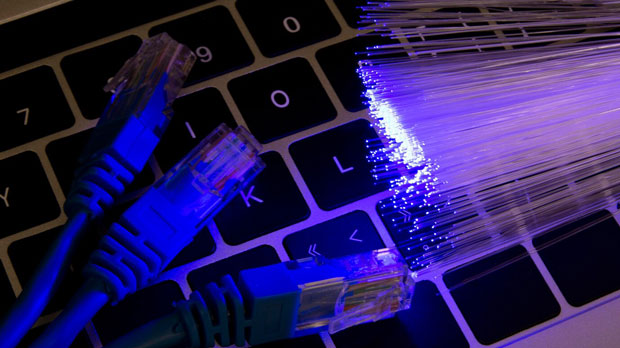In the world of residential proxies, two popular services stand out: Proxyium and PYPROXY. Both offer distinct advantages and cater to users' needs, but when comparing them in terms of performance, reliability, and user experience, one might be more advantageous depending on the specific requirements. Residential proxies are widely used for activities like web scraping, data mining, and security testing. In this article, we will analyze the key differences between Proxyium and PyProxy, evaluating each provider’s strengths and limitations to help businesses and individuals make an informed decision about which service is the best fit for their needs. What Are Residential Proxies?Before diving into the comparison, it's crucial to understand what residential proxies are and why they are important. Residential proxies are IP addresses assigned to real residential devices such as smartphones, laptops, and home computers. Unlike data center proxies, which come from centralized locations, residential proxies are perceived as genuine users by websites and services. This makes them highly effective for tasks that require anonymity and evading detection, such as web scraping, bypassing geo-restrictions, and managing multiple accounts. Overview of Proxyium and PyProxyProxyium and PyProxy are both residential proxy services, but they have unique features that differentiate them. Proxyium is known for offering a more straightforward, user-friendly interface and a flexible pricing model. PyProxy, on the other hand, boasts an extensive global network of residential IPs and higher customization options for advanced users. Network Coverage: Global ReachWhen choosing a proxy provider, the size and geographical spread of their network are essential factors to consider. Proxyium and PyProxy both claim to have extensive global reach, but they differ in their distribution.Proxyium has a more concentrated network, with primary focus in North America and Europe. It offers high-quality IPs in these regions, making it ideal for users targeting these specific markets. However, for users needing proxies in other parts of the world, Proxyium may not be as comprehensive.PyProxy, however, offers a more global network. It provides residential IPs from a wide range of countries, including emerging markets in Asia, South America, and Africa. This gives PyProxy an edge if you're conducting global operations or need access to IPs from diverse locations.Performance and SpeedPerformance is another key factor when selecting a proxy provider. Speed and reliability can make or break your experience, especially for tasks like web scraping or automation.Proxyium generally offers excellent speed for users in North America and Europe. Their proxies are optimized for low latency and high availability in these regions, making them a solid choice for users operating in these areas. However, users in other parts of the world may experience slower connection speeds due to limited server locations.PyProxy, on the other hand, offers a broader network with a strong emphasis on maintaining high speeds and low latency across different regions. This makes PyProxy a more reliable choice for users requiring consistent performance across a variety of locations. PyProxy also has a reputation for fast proxy rotation, ensuring that users can continue their tasks without interruption.Pricing and FlexibilityWhen considering which provider to choose, cost is an important factor. Proxyium and PyProxy offer different pricing structures, catering to different budgets and needs.Proxyium is generally more affordable for entry-level users. Its pricing model is flexible, offering pay-as-you-go options and discounts for bulk purchases. This makes Proxyium a good choice for smaller businesses or individuals who don’t need large volumes of traffic but still require the benefits of residential proxies.PyProxy, in contrast, offers a more premium pricing model. While its services are priced higher, they provide a higher level of customization and more extensive features, such as automatic IP rotation and dedicated support. PyProxy’s pricing is ideal for larger businesses or enterprises that require advanced proxy features and the ability to scale.Security and AnonymitySecurity is a critical factor in choosing a residential proxy provider. Both Proxyium and PyProxy focus on providing high levels of anonymity and security, but they approach it in slightly different ways.Proxyium uses advanced encryption methods to ensure secure data transmission, and their residential IPs are not easily identifiable as proxies. However, the service does not offer the same level of custom security features as PyProxy.PyProxy, on the other hand, emphasizes a high level of anonymity by offering dedicated IPs, IP rotation, and encrypted data streams. This makes PyProxy a stronger choice for users who prioritize privacy and security in their operations.Customer Support and User ExperienceAnother important consideration is customer support. Residential proxy users often require assistance with technical issues or troubleshooting.Proxyium offers standard customer support through email and a ticketing system. Their response time is generally fast, but the support is more geared toward basic user queries and general issues.PyProxy provides a higher level of customer support, offering live chat, a detailed knowledge base, and 24/7 support. This can be particularly useful for businesses that require immediate assistance and prefer more comprehensive customer service options.Use Cases and Best FitDifferent users will find varying levels of benefit from Proxyium and PyProxy, depending on their needs.Proxyium is well-suited for small to medium-sized businesses or individuals needing residential proxies for local web scraping, managing social media accounts, or bypassing local restrictions. Its pricing model makes it ideal for budget-conscious users.PyProxy is better suited for large enterprises or individuals who need proxies for high-volume web scraping, global data collection, or activities requiring high levels of anonymity. PyProxy’s larger network, speed, and security features make it the ideal choice for users with more complex needs.Conclusion: Which One to Choose?In conclusion, both Proxyium and PyProxy have their merits in the residential proxy market. The choice between the two largely depends on the user's specific needs, including location, performance, security, and budget. If you're a small business or individual operating primarily in North America or Europe, Proxyium offers a cost-effective, reliable solution with straightforward features. However, if you require a global network, faster speeds, and enhanced security, PyProxy stands out as the more advanced option. For businesses that prioritize performance, global reach, and high-end customization, PyProxy is the clear winner.Ultimately, your decision should be based on what suits your particular requirements and operational scale. Both services provide robust solutions, but the edge goes to PyProxy for users who demand more from their residential proxy service.
Aug 28, 2025



































































